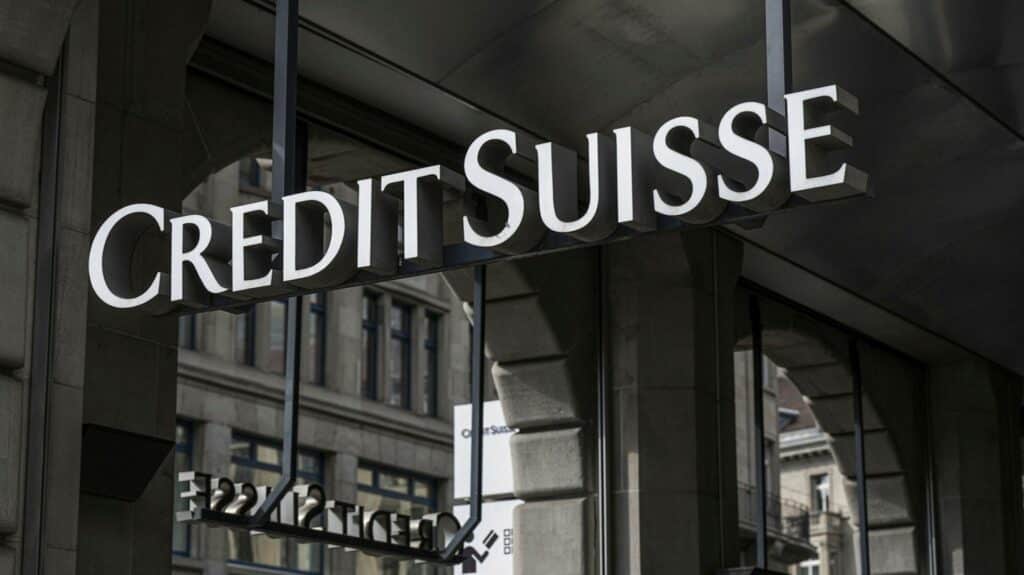Lately, I’ve noticed bank failures and plunging bank stocks. Two big tech-focused banks fell due to bank runs, prompting authorities to support the financial system urgently.
Silicon Valley Bank and Signature Bank in the US, along with Switzerland’s Credit Suisse, experienced failures, raising questions about European banks’ foundations and causing investors to reevaluate the banking system. Deutsche Bank’s stocks dipped over 13%, shedding one-fifth of its value in March.
These banks’ struggles make investors uneasy about the banking system’s stability. The recent failures and solvency issues could impact small businesses and the overall economy. It’s crucial to grasp why bank stocks are falling to understand the possible long-term effects on finance. I will do exactly that in this post.
The Collapse of Silicon Valley Bank

Silicon Valley Bank, founded in 1983, catered to the tech industry, offering banking services to startups. It became America’s 16th largest bank, with assets tripling from $71 billion at 2019’s end to $220 billion by March 2022. However, the bank primarily invested in long-term bonds when rates were nearly zero. Rising interest rates caused these bonds to lose value, and the bank lost over $160 billion in just 24 hours.
As tech startups pulled out deposits to survive in a tough climate for IPOs and private fundraising, SVB faced a capital shortage. Their $1.75 billion capital raising announcement on March 6 alarmed people, sparking rumors of insufficient capital. Social media platforms like Twitter and WhatsApp fueled this panic, leading to a bank run where customers rushed to withdraw their money.
In 48 hours following the asset sale disclosure, the bank crumbled—the largest bank failure since Washington Mutual in 2008. SVB’s collapse distressed customers and investors. The US government intervened, guaranteeing customer deposits, but the effects persist in global financial markets. I’m concerned that Silicon Valley Bank’s collapse might set off a wider banking crisis.
Credit Suisse and Signature Bank Struggles

Credit Suisse and Signature Bank have encountered difficulties lately. Credit Suisse, seen as the weakest among Europe’s large banks, has suffered from missteps, compliance failures, and management overhauls. They’ve faced fines and penalties for tax evasion, bad bets, and other issues. CEO Tidjane Thiam resigned in 2020 after two major spying scandals involving top bank officials.
Signature Bank, however, closed after a depositor run, sparked by an admission of nearly $2 billion loss on long-dated government bond holdings and a need for recapitalization. Signature Bank and Silvergate, both known for their ties to the cryptocurrency industry, shut down as depositors withdrew.
Though unrelated, Credit Suisse’s and Signature Bank’s troubles happened concurrently, increasing investor concern about the banking sector. Credit Suisse is a large international bank that has dealt with problems for years. These banks’ difficulties have made investors anxious.
Solvency Issues Impacting Other Banks
Following SVB’s collapse, numerous banks face solvency issues, stirring global financial system concerns. Deutsche Bank, a German lender, has experienced troubles for years and recently saw its shares drop over 13% after credit default swaps increased. Despite being profitable and having 70% of its retail deposits insured, Deutsche Bank’s shares lost one-fifth of their value in March.
Major European banks also fell, with Germany’s Commerzbank down 5.45%, France’s Societe Generale off 6%, and Austria’s Raiffeisen down 7.9%. The selloff could be emotion-driven, but it’s unsurprising considering the banks’ history and performance since the global financial crisis. Rising interest rates threaten banks, as they raise the yield on various government bonds, including two-year Treasuries, which reached 5%.
Wells Fargo, Goldman Sachs, JPMorgan, and Citigroup shares have fallen for different reasons. On March 15, 2023, Wells Fargo and Goldman Sachs shares dropped over 3%, JPMorgan lost 4.7%, and Citigroup slid 5.4%. Credit Suisse’s sharp drop rattled an already shaken market segment due to two large bank failures. Some regional bank stocks experienced even larger declines.
Large US banks were also affected, with regional bank stocks seeing more significant drops. First Republic’s shares fell over 21% after S&P Global Ratings and Fitch downgraded its debt rating. However, on March 16, 2023, Bank of America, Citigroup, JPMorgan Chase, and Wells Fargo announced a $5 billion uninsured deposit each into First Republic Bank. This move shows confidence in the banking system and helps First Republic maintain liquidity for its customers.
Ripple Effect on Global Banking
Bank losses can be linked to the Federal Reserve’s interest-rate policies over the past year. To combat inflation and cool the economy, the Fed increased its benchmark interest rate from nearly zero to about 4.6%. This indirectly raised yields on government bonds, especially two-year Treasuries, which exceeded 5%.
These banks’ collapse can impact small businesses, the financial sector, and overall confidence in the banking system. Although the government guarantees customer deposits, the situation can lead to a liquidity crisis as customers withdraw from other banks, causing a ripple effect on the wider economy.
Reasons Behind the 2023 Banking Crisis
The 2023 banking crisis was initiated by the collapse of the 16th largest US bank, Silicon Valley Bank, followed by Signature Bank, the 29th-largest. Their downfall resulted from insufficient diversification, a classic bank run, and large deposits from startup companies. Many of these deposits were uninsured, as the FDIC’s $250,000 coverage limit wasn’t enough for Silicon Valley’s startup clients and venture capitalists.
This prompted a significant US government intervention to safeguard the financial system. The FDIC, Treasury Department, and Fed reassured depositors, even those exceeding the $250,000 limit, that their funds would be protected. This situation also raised concerns about the global financial system’s health.
Ironically, the $620 billion in unrealized losses were partly due to the Fed’s interest-rate policies. As mentioned earlier, the benchmark interest rate hike led to substantial losses for banks holding these bonds in their portfolios.
Is the 2023 Banking Crisis Like 2008?

The 2023 banking crisis shares similarities with 2008, such as bank failures and government intervention. However, the root problems differ. In 2008, bad mortgages and weakening growth led to a vicious cycle. Today’s crisis stems from the Fed’s rapid tightening, causing paper losses for banks with long-term bonds at lower rates.
The current crisis is unfolding faster, with two tech-focused banks collapsing within three days. Yet, its impact on the global economy might be less severe than in 2008, given key differences. The upcoming debt ceiling standoff could add complexity and risk to an already-challenging financial landscape.
Investor Insights Into the Crisis
As an investor, staying informed about the banking system and global financial health is crucial. During bank failures, governments might implement emergency measures to support the financial system. Understanding how banks incur significant losses, which can be linked to the Federal Reserve’s interest-rate policies, is also essential. While rising interest rates can boost bank profits, long-term investments may lose value unless banks hedge these investments.
Take note of large banks’ actions, reflecting their confidence in the system. For instance, several major banks made uninsured deposits into First Republic Bank, ensuring liquidity for customer service.
Moreover, be mindful of individual banks’ health, like Credit Suisse, which saw a sharp share price drop and borrowed $54 billion from the Swiss central bank. Grasping the reasons behind such declines and evaluating potential ripple effects on the global financial system is important..
Final Thoughts
Recent bank failures and financial turbulence have raised concerns about the global financial system’s health. Yet, actions by the largest US banks demonstrate their faith in the nation’s banking system. The selloff might be emotionally driven, but it aligns with the banks’ past performance and history after the global financial crisis.
The government’s backing of uninsured deposits has saved numerous companies from losing essential funds for payroll, bill payments, and daily operations. The UK government has also stated that its banking sector is not at risk. As an investor, staying informed about your investments is vital.
